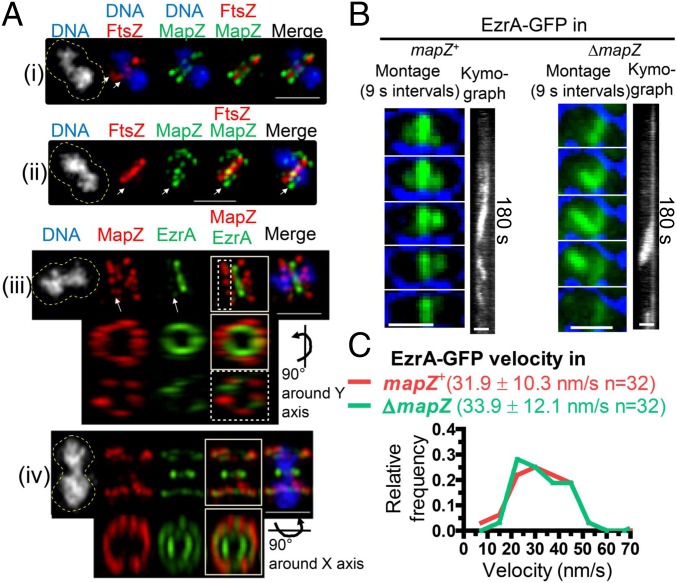Fig. 6.
MapZ is present in nascent ring planes containing FtsZ and EzrA filaments. IFM (A) or TIRFm (B and C) was performed to characterize the role of MapZ relative to FtsZ/EzrA filament organization. (Scale bars, 1 µm.) (A) Representative images of 3D-SIM dual IFM colocalizing FtsZ-Myc and MapZ-L-FLAG3 (strain IU9090; i and ii) or MapZ-L-FLAG3 and EzrA-HA (strain IU9207, iii and iv). Cultures were grown in BHI, at 37 °C in 5% CO2, and IFM and DNA staining with DAPI were carried out as described in SI Appendix, Experimental Procedures. The dotted yellow lines in the DAPI column are approximate outlines of cell shape. For cells (i), (ii), and (iii), arrows point to the nascent ring plane where FtsZ or EzrA filaments can be seen. For cell (iii), the nascent ring (dotted box) and whole cell (solid box) were rotated, while for cell (iv), only the whole cell was rotated (solid box). The experiment was performed twice with similar results. (B) Representative montages and accompanying kymographs of EzrA-GFP (green in montage) overlaid with bright field (blue outline, cells are black) in mapZ+ (IU10449) versus ΔmapZ (IU10540), strains visualized by TIRFm (at one frame per second; see Movie S10). (Scale bars, 1 μm.) (C) No significant difference in the distributions of velocities of EzrA-GFP in the mapZ+ or ΔmapZ strains was found by an unpaired two-tailed t test (GraphPad Prism).

